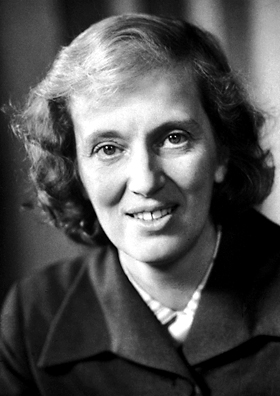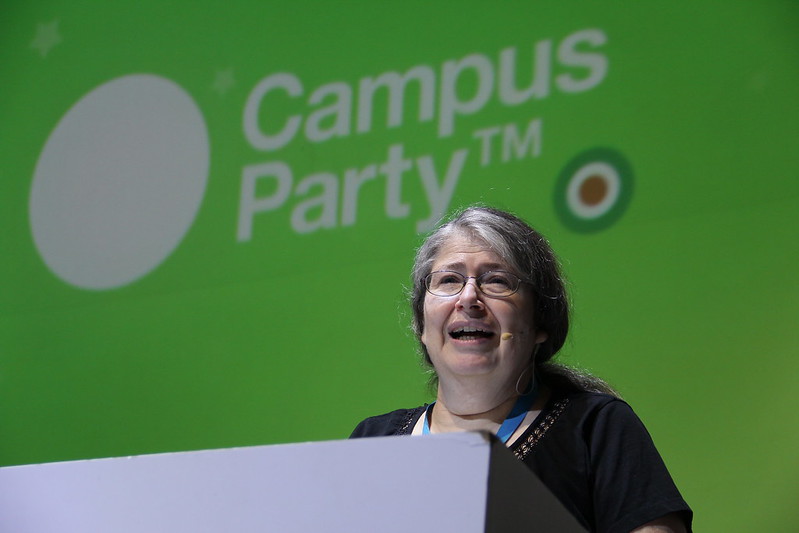STEM (science, technology, engineering, and mathematics) have long been male-dominated fields. In fact, according to the United Nations, more than 70% of the world’s scientific researchers are male.
Studies show that, even today, women are often dissuaded from studying STEM subjects and pursuing STEM careers from an early age. According to data published by the Pew Research Center, women remain considerably underrepresented in computer science, engineering, and the physical sciences, where they represent 25%, 14%, and 39% of professionals, respectively.
In this article, we explore the lives and work of three inspirational female scientists who defied these trends. All three are considered pioneers in their respective fields, yet they aren’t widely known by the broader public.
1. Alice Ball – Chemist (1892-1916)

Alice Ball was a chemist who discovered an effective, injectable treatment for leprosy during the early 1900s. Her method was the most effective treatment for the disease for much of the first half of the 20th century. Ball’s achievements are also remarkable because she was an African American woman working in the sciences at time when this was extremely rare.
Born in Seattle, Washington, Ball was one of four children in a middle class family. Her grandfather was a famous photographer and abolitionist, and her father was a lawyer, photographer, and newspaper editor.
Ball studied at the University of Washington, where she earned degrees in pharmacy and pharmaceutical chemistry. During this time, she co-published an article in the prestigious Journal of the American Chemical Society—an accomplishment that was extremely rare for women and especially for African American women. She also earned a master’s degree in chemistry from the University of Hawaii.
As part of her research at the University of Hawaii, Ball began investigating the chemical properties of chaulmoogra oil, which at the time was the best-known treatment for leprosy.
Alice Ball was the first African American person, male or female, to receive a master’s degree from the University of Hawaii. She was also the university’s first female professor and its first African American professor.
For centuries, a great deal of stigma surrounded leprosy, and there was virtually no prospect of recovery from the disease. Individuals diagnosed with the condition were often exiled to Molokai, a Hawaiian Island, in the expectation they would die there in quarantine.
Chaulmoogra oil, a derivative of the seeds of Hydnocarpus wightianus, had been revered throughout the Indian subcontinent for its healing properties since medieval times. Nevertheless, the treatment was not effective in its traditional form, since it was too sticky to be applied effectively, and its oiliness made it unsuitable for injection. Drinking the oil was not particularly effective either, as its extremely bitter taste induced vomiting.
At the age of 23, Alice Ball developed a method of rendering the oil both injectable and absorbable by the human body. Her method involved chemically modifying ethyl ester compounds that had been isolated from the oil. In 1918, 78 patients with leprosy were discharged from Kalihi Hospital in Hawaii, thanks to her revolutionary new treatment.
Sadly, Ball did not live to enjoy her success. Her life was cut tragically short when she became ill and died in 1916 at just 24 years of age. The president of the University of Hawaii continued her research, published her technique, and began producing large quantities of chaulmoogra extract for clinical use. He named the technique after himself and did not credit Ball, until a doctor she had worked with at Kalihi Hospital protested. Ball’s method not only saved lives, but also allowed people with leprosy an escape from life in exile on Molokai. They could now be treated at home.
2. Dorothy Hodgkin – Chemist (1910-1994)

Dorothy Hodgkin was a Nobel-Prize-winning British chemist who made significant contributions to the field of crystallography.
Born Dorothy Mary Crowfoot in Cairo, Egypt, on May 12, 1910, she was daughter of John Winter Crowfoot, an employee of Britain’s Ministry of Education. The family returned to England in 1914 and remained there following the outbreak of World War I.
Hodgkin attended Somerville College, Oxford. In 1932, she became the third woman to be awarded a first-class honors degree from the prestigious university. She moved to Newnham College, Cambridge, to study for her PhD. During this time, she became interested in the potential of X-ray crystallography in determining protein structure.
Dorothy Hodgkin was responsible for numerous groundbreaking discoveries, including identifying the molecular structures of penicillin, vitamin B12, and insulin. Her work on insulin paved the way for significant improvements in the treatment of diabetes.
Hodgkin was the third woman to receive the Nobel Prize in Chemistry, which she was awarded in 1964 in recognition of her work identifying the structure of important biochemical substances and advancing X-ray techniques. To this day, she is still the only British female scientist to have received the Nobel Prize.
3. Radia Perlman – Computer Programmer (1951-present)
Radia Perlman is an American computer programmer best known for inventing Spanning Tree Protocol, a concept that is integral to the operation of computer networks today.

Born in Portsmouth, Virginia, on December 18, 1951, Radia Perlman grew up in a Jewish family. Both of Perlman’s parents were employed by the US government as engineers: her father worked on radars, while her mother was a computer programmer and mathematician.
Perlman studied at MIT. She worked in the Artificial Intelligence Laboratory, programming debuggers and other system software. She earned her bachelor’s degree and master’s degree in mathematics at MIT, as well as her PhD in computer science. At the time, she was one of only around 50 women out of a class of 1,000.
While working for Digital Equipment Corporation in the early 1980s, Perlman developed Spanning Tree Protocol, which is essential to the operation of network bridges. In all, she holds more than 100 patents, has authored a textbook, and has taught classes at Harvard, MIT, and the University of Washington.
Radia Perlman’s breakthrough earned her the informal moniker “Mother of the Internet,”a title that many might aspire to, but one she firmly rejects. As Perlman explains, she may have made important contributions, but no single person can claim all the credit for inventing the internet. Still, she is one of a handful of people whose individual contributions have made a fundamental difference in the structure of the internet as we know it.
Women in STEM
These three women are just a few examples of the inspirational women in the STEM—there are many more, both famous and unseen, who are working to advance these fields every day.

 Joanna (Jo) Riley is an entrepreneur, investor, and advocate in technology, and is currently the CEO and Co-Founder of Censia. Jo has a highly experienced background in building and scaling companies, which she attributes to her deep passion for people and building technologies that allow people to be their best selves. She brings her wide knowledge of the industry to better transform the way enterprise companies hire talent. You can connect with Joanna Riley at @joannakiddriley on
Joanna (Jo) Riley is an entrepreneur, investor, and advocate in technology, and is currently the CEO and Co-Founder of Censia. Jo has a highly experienced background in building and scaling companies, which she attributes to her deep passion for people and building technologies that allow people to be their best selves. She brings her wide knowledge of the industry to better transform the way enterprise companies hire talent. You can connect with Joanna Riley at @joannakiddriley on